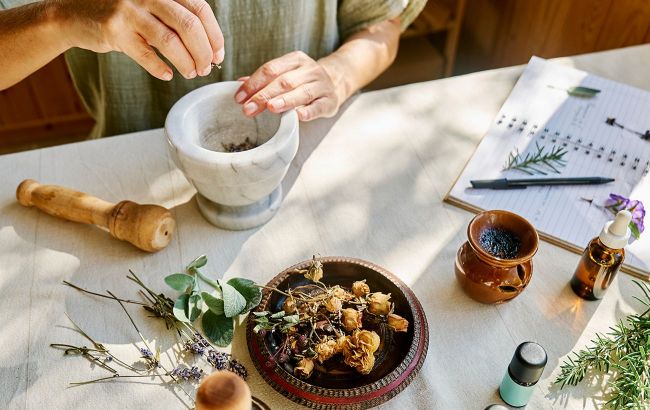Ancient healing traditions of Ukrainian villages still alive today
 How Ukrainians treated diseases in the past and what elements of folk medicine are still alive (photo: Getty Images)
How Ukrainians treated diseases in the past and what elements of folk medicine are still alive (photo: Getty Images)
In many Ukrainian villages, unique healing methods were preserved for centuries – from herbal infusions to magical spells. Folk healers, both men and women, passed down recipes from generation to generation.
What ancient practices exist, where did they come from, and what is still used today?
How folk medicine appeared
Folk medicine is a combination of practical experience, folklore, and worldview beliefs. At its core were simple observations of nature, empirical knowledge, and faith that merged into methods of healing with words, herbs, and rituals.
Herbal medicine – the foundation of healing in ancient times
Phytotherapy was one of the most widespread methods. Villagers knew when to collect leaves, flowers, or roots – for example, leaves before blooming, bark in spring, flowers at the beginning of blooming.
Drying herbs was done in a dark, well-ventilated place, and then they were stored in glass jars or fabric bags under conditions that preserved their healing properties for a year or longer.
Spells, incantations, and magic
In addition to herbs, verbal practices were widely used – spells, prayers, magical formulas that were meant to "drive away" illness like an enemy. This could be a threat, a negotiation, or a deception of the disease.
For example: "Go, illness, into the forest…" or "So-and-so is not at home…" – verbal formulas were an important part of traditional healing.
During epidemics, ritual actions were performed: walking around the village, plowing, large bonfires, prayers – all this had both ritual and psychological significance.
Healers and folk practitioners
Healers, both men and women, were the carriers of folk medicine – they collected and passed down knowledge, developed recipes and treatment techniques. Often this was a craft handed down within families. Folk healing was inseparably connected with folk medicine, especially in rural tradition.
Historical context
Folk medicine traces its roots back to the Kyivan Rus era: "Herbalists," "Potion Books," and "Medical Guides" are mentioned as early as the 17th–18th centuries.
Already at that time, herbal medicine was combined with rituals, and during the Cossack period, phytotherapy and aromatherapy developed. People collected herbs for treatment, antiseptics, knew methods of stopping bleeding, and used mixtures and nontraditional remedies.
What remains relevant today
Today, many folk methods are confirmed by evidence-based medicine. Phytotherapy, reflexotherapy, and apitherapy are recognized as effective methods for complementing official treatment, and the WHO acknowledges folk medicine as a valuable healthcare resource.
In Ukraine there are legal mechanisms regulating activities in the field of folk medicine – a special license from the Ministry of Health is required. That is, one must not only be a hereditary herbalist or healer but also have a license to practice treatment.
You may also be interested in:
- Ukrainian funeral traditions: Foods and drinks with symbolic meaning
- How people were buried in ancient timesForbidden holidays of Ukraine: How traditions survived Soviet repression
Sources: Kyivshchyna, Znakhar's Shop, Ivan Honchar Museum, Wikipedia.
This material is for informational purposes only and should not be used for medical diagnosis or self-treatment. Our goal is to provide readers with accurate information about symptoms, causes, and methods of detecting diseases. RBС-Ukraine is not responsible for any diagnoses that readers may make based on materials from the resource. We do not recommend self-treatment and advise consulting a doctor in case of any health concerns.

